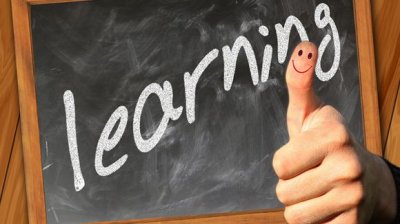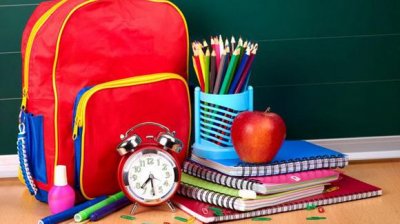小学六年级英语归类复习知识要点汇总
小学六年级英语归类复习知识要点汇总。大思英语小编为了帮助同学们在六年级英语学习中更好的复习,为同学们整理了六年级英语归类复习汇总,希望对同学们学习后能有所帮助,一起来复习吧。
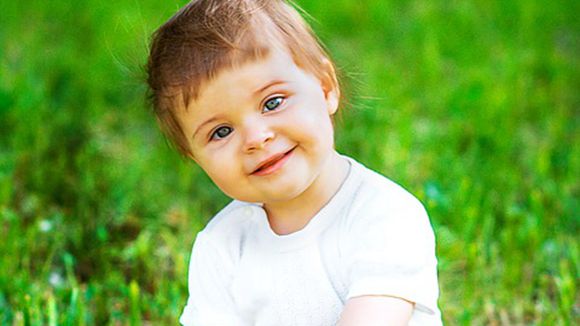
小学六年级英语归类复习知识要点汇总
1
第一部分:基础知识
1.字母:26个字母的大小写
ABCDEFGHIJKLMNOPQRSTUVWXYZ
abcdefghijklmnopqrstuvwxyz
2.语音:元音的发音
五个元音字母:AEIOU
12个单元音: 前元音:[i:] [?] /e/ [?]
中元音:[?:] [?]
后元音:[ɑ:] [?] [?:] [u :] [?] [?]
双元音(8个)
Ⅰ.合口双元音(5个)[ai] [ei] [au] [?u] [?i]
Ⅱ.集中双元音(3个) [i?][ε?][u?]
3.词汇:词汇量,近反义词
4.句子:大小写,标点符号
2
第二部分:语法知识
一。名词:名词单复数,名词的格
(一)名词单复数
1.一般情况,直接加-s,如:book-books, bag-bags, cat-cats, bed-beds
2.以s. x. sh. ch结尾,加-es,如:bus-buses, box-boxes, brush-brushes, watch-watches
3.以辅音字母+y结尾,变y为i, 再加-es,如:family-families, strawberry-strawberries
4.以f或fe结尾,变f或fe为v, 再加-es,如:knife-knives
5.不规则名词复数:
man-men, woman-women, policeman-policemen, policewoman-policewomen, mouse-mice
child-children, foot-feet, tooth-teeth, fish-fish, people-people, Chinese-Chinese, Japanese-Japanese
不可数名词的复数就是原型: paper, juice, water, milk, rice, tea
(二)名词的格
(1) 有生命的东西的名词所有格:
a) 单数后加 ’s 如: Lucy’s ruler my father’s shirt
b) 以s 结尾的复数名词后加 ’如: his friends’ bags
c) 不以s 结尾的复数后加 ’s children’s shoes
l并列名词中,如果把 ’s加在最后一个名词后,表示共有, 如:
Tom and Mike’s car 汤姆和迈克共有的小汽车
l要表示所有物不是共有的,应分别在并列名词后加’s
Tom’s and Mike’s cars 汤姆和麦克各自的小汽车
(2)表示无生命东西的名词通常用 of +名词来表示所有关系:如:
a picture of the classroom a map of China
3
第二部分:语法知识
二。冠词:不定冠词,定冠词种类:
(1)不定冠词:a / an a unit / an uncle
元音开头的可数名词前用an :
an egg / an apple / an orange / an eraser / an answer / an ID card / an alarm clock / an actor / an actress / an e-mail / an address / an event / an example / an opera / an houran old man / an interesting book / an exciting sport / an action movie / an art lesson /
(2)定冠词:the the egg the plane
2. 用法:
定冠词的用法:
(1)特指某(些)人或某(些)物: The ruler is on the desk.
(2)复述上文提到的人或物:He has a sweater. The sweater is new.
(3)谈话双方都知道的人或物:The boys aren’t at school.
(4)在序数词前: John’s birthday is February the second.
(5)用于固定词组中: in the morning / afternoon / evening
不用冠词的情况:
(1)专有名词前:China is a big country.
(2)名词前有定语:this , that , my , your , some, any , no 等:
This is my baseball.
(3)复数名词表示一类人和事:Monkeys can’t swim. They are teachers.
(4)在节日,日期,月份,季节前:Today is Christmas Day. It’s Sunday.
(5)一日三餐前:We have breakfast at 6:30.
(6)球类 棋类运动前:They often play football after class. He plays chess at home.
* 但乐器前要用定冠词:I play the guitar very well.
(7)学科名称前:My favorite subject is music.
(8)在称呼或头衔的名词前:This is Mr Li.
(9)固定词组中:at noon at night by bus
4
第二部分:语法知识
三、代词、形容词、副词
代词:人称代词,物主代词
人称代词物主代词
主格宾格
第一
人称单数I(我)memy(我的)
复数we(我们)usour(我们的)
第二
人称单数you(你)youyour(你的)
复数you(你们)youyour(你们的)
第三
人称单数he(他)himhis(他的)
she(她)herher(她的)
it(它)itits(它的)
复数they(他们/她们/它们)themtheir(他们的/她们的/它们的)
形容词,副词:比较级,最高级
(一)、形容词的比较级
1、形容词比较级在句子中的运用:两个事物或人的比较用比较级,比较级后面一般带有单词than。比较级前面可以用more, a little来修饰表示程度。than后的人称代词用主格(口语中可用宾格)。
2.形容词加er的规则:
⑴ 一般在词尾加er ;
⑵ 以字母e 结尾,加r ;
⑶ 以一个元音字母和一个辅音字母结尾,应双写末尾的辅音字母,再加er ;
⑷ 以辅音字母+y结尾,先把y变i,再加er 。
3.不规则形容词比较级:
good-better, beautiful-more beautiful
(二)副词的比较级
1.形容词与副词的区别(有be用形,有形用be;有动用副,有副用动)
⑴在句子中形容词一般处于名词之前或be动词之后
⑵副词在句子中最常见的是处于实义动词之后
2.副词比较级的变化规则基本与形容词比较级相同(不规则变化:well-better, far-farther)
5
第二部分:语法知识
四、数词:基数词、序数词
(1)1-20
one,two,three,four,five,six,seven,eight,nine,ten,eleven,twelve,thirteen,fourteen,fifteen, sixteen,seventeen,eighteen,nineteen,twenty
(2)21-99 先说几十,再说几,中间加连字符。
23→twenty-three,34→thirty-four,45→forty—five,56→fifty-six,67→sixty-seven,78→seventy-eight,89→eighty-nine,91→ninety-one
(3)101—999先说几百,再加and,再加末两位数或末位数;
586→five hundred and eighty-six,803→eight hundred and three
(4)l,000以上,先从右往左数,每三位数加一个,,第一个,前为thousand.第二个,前为million,第三个,前为billion
1,001→one thousand and one
18,423→eighteen thousand,four hundred and twenty-three
6,260,309→six million two hundred and sixty thousand three hundred and nine
750,000,000,000→seven hundred and fifty billion
序数词
(1)一般在基数词后加th
eg.four→fourth,thirteen→thirteenth
(2)不规则变化
one→first,two→second,three→third,five→fifth,eight→eighth,nine→ninth,twelve—twelfth
(3)以y结尾的十位整数,变y为ie再加th
twenty→twentieth, forty→fortieth, ninety→ninetieth
(4)从二十一后的几十几直至几百几十几或几千几百几十几只将个位的基数词变为序数词。
twenty-first,two hundred and forty-fifth
基数词转为序数词的口诀:
基变序,有规律,词尾加上-th.
一,二,三,特殊记,词尾字母t,d,d.
八去t,九去e, ve要用f替。
ty将y变成i,th前面有个e.
若是碰到几十几,前用基来后用序。
6
第二部分:语法知识
五、介词:常用介词:in, on, at, behind等
1.at表示时间概念的某一个点。(在某时刻、时间、阶段等)。
at 1:00(dawn,midnight,noon)在一点钟(黎明、午夜、中午)
2.on
1)表示具体日期。
注:(1)关于在周末的几种表示法:
at(on)the weekend在周末---特指
at(on)weekends在周末---泛指
over the weekend在整个周末
during the weekend在周末期间
(2)在圣诞节,应说at Christmas?而不说on Christmas?
2)在(刚……)的时候。
On reaching the city he called up his parents.
一到城里他就给父母打了一个电话。
1)表示时段、时期,在多数情况下可以和during互换,前者强调对比,后者强调持续。 in(during)1988(December,the 20th century)在一九八八年(十二月、二十世纪)
六、动词:动词的四种时态:
(1)一般现在时:
一般现在时的构成
1. be动词:主语+be(am, is, are)+其它。如: I am a boy. 我是一个男孩。
2. 行为动词:主语+行为动词(+其它)。 如: We study English. 我们学习英语。
当主语为第三人称单数(he, she, it)时,要在动词后加"-s或-es"。如:Mary likes Chinese.玛丽喜欢汉语。
动词+s的变化规则
1.一般情况下,直接加-s,如:cook-cooks, milk-milks
2.以s. x. sh. ch. o结尾,加-es,如:guess-guesses, wash-washes, watch-watches, go-goes
3.以辅音字母+y结尾,变y为i, 再加-es,如:study-studies
(2)一般过去时:
动词过去式详解 动词的过去式的构成规则有:
A、规则动词
① 一般直接在动词的后面加ed:如 worked , learned , cleaned , visited
② 以e结尾的动词直接加d:如 lived , danced , used
③ 以辅音字母加y结尾的动词要改y为i再加ed(此类动词较少)如 study – studied carry – carried worry – worried (注意play、stay不是辅音字母加y,所以不属于此类)
④ 双写最后一个字母(此类动词较少)如 stopped
B、不规则动词(此类词并无规则,须熟记)小学阶段要记住以下动词的原形和过去式:sing – sang , eat – ate ,
see – saw , have – had , do – did , go – went , take – took , buy – bought , get – got , read – read ,fly – flew , am/is – was ,
are – were , say – said , leave – left , swim – swam , tell – told , draw – drew , come – came , lose – lost , find – found , drink – drank , hurt – hurt , feel – felt
(3)一般将来时:
基本结构:
①be going to + do;
②will+ do. be going to = will
I am going to go swimming tomorrow(明天). = I will go swimming tomorrow.
(4)现在进行时: am,is,are+动词现在分词
动词现在分词详解 动词的ing形式的构成规则:
① 一般的直接在后面加上ing , 如doing , going , working , singing , eating
② 以e 结尾的动词,要先去e再加ing ,如having , writing
③ 双写最后一个字母的(此类动词极少)有:running , swimming , sitting , getting
7
第三部分:句法
1.陈述句
(1)肯定句:是指用肯定的语气来陈述的句子,如:I’m a student. She is a doctor. He works in a hospital.
There are four fans in our classroom. He will eat lunch at 12:00. I watched TV yesterday evening.
(2)、否定句:含有否定词或表示否定意义词的句子,如:I’m not a student. She is not (isn’t) a doctor.
He does not (doesn’t) work in a hospital. There are not (aren’t) four fans in our classroom.
He will not (won’t) eat lunch at 12:00. I did not (didn’t) watch TV yesterday evening.
2. 疑问句
一般疑问句:是指询问事实的句子,此类句子必须用yes,或no来回答。
特殊疑问句:以特殊疑问词(what , where , who , which , when , whose , why , how等)开头引导的句子。此类句子应该问什么就答什么,不能用yes 、no来回答。
3.There be句型
There be 句型与have, has的区别
1、There be 句型表示:在某地有某物(或人)
2、在there be 句型中,主语是单数,be 动词用is ; 主语是复数,be 动词用are ; 如有几件物品,be 动词根据最*近be 动词的那个名词决定。
3、there be 句型的否定句在be 动词后加not , 一般疑问句把be 动词调到句首。
4、there be句型与have(has) 的区别:there be 表示在某地有某物(或人);have(has) 表示某人拥有某物。
5、some 和any 在there be 句型中的运用:some 用于肯定句, any 用于否定句或疑问句。
6、and 和or 在there be句型中的运用:and 用于肯定句, or 用于否定句或疑问句。
7、针对数量提问的特殊疑问句的基本结构是:
How many + 名词复数 + are there + 介词短语?
How much + 不可数名词 + is there + 介词短语?
8、针对主语提问的特殊疑问句的基本结构是:
What’s + 介词短语?
小学六年级英语归类复习知识要点汇总。英语句型是学习英语的重点知识,今天大思英语小编的这篇六年级总复习——主要句型归类,希望大家认真阅读。帮助大家英语复习!
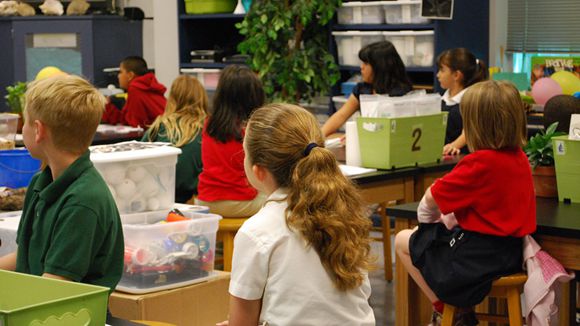
(三年级上册----六年级下册)
I询问姓名、年龄。
1, ----What’s your name? 你叫什么名字?
----My name is…… 我叫……。
2, ----How old are you? 你几岁了?
----I’m 12. 我十二岁。
II询问颜色。
1, ----What colour is it? 它是什么颜色的?
----It’s yellow and white. 黄白相间。
2, ----What colour are they? 它们是什么颜色的?
----They’re green. 绿色的。
III询问数量或价钱。
1, ----How many kites can you see? 你可以看见几只风筝?
----I can see 12. 我可以看见十二只风筝。
2, ----How many crayons do you have? 你有多少支彩笔?
----I have 16. 我有十六支。
3, ----How many people are there in your family? 你家有几口人?
----Three. 三口人。
4, ----How much is this dress? 这条连衣裙多少钱?
----It’s ninety-nine yuan. 九十九元。
5, ----How much are these apples? 这些苹果多少钱?
----They’re thirty-five yuan. 三十五元。
IV询问时间或日期。
1, ----What time is it now? 现在几点钟?
----It’s nine o’clock. It’s time for English class. 九点。该上英语课了。
(----It’s eight o’clock. It’s time to go to bed.八点。该上床睡觉了。)
2, ----What day is it today? 今天星期几?
----It’s Monday. 星期一。
(----What do we have on Mondays? 我们星期一上哪些课?
----We have Chinese, English, math …语文、英语、数学……)
3, ----When is your birthday? 你的生日是什么时候?
----It’s October 1st, our National Day. 十月一日,国庆节。
4, ----When do you do morning exercises? 你们什么时候做早锻炼?
----I usually do morning exercises at 8:30. 我们通常8:30做早锻炼。
V询问方位或地方。
1, ----Where is my toy car? 我的玩具汽车在哪儿?
----It’s here, under the chair. 在这儿,在椅子下面。
2, ----Where is the canteen? 餐厅在哪儿?
----It’s on the first floor. 在一楼。
3, ----Where are the keys? 钥匙在哪儿?
----They’re in the door. 在门上。
4, ----Excuse me. Where is the library, please? 对不起,请问图书馆在哪儿?
----It’s near the post office. 在邮局附近。
5, ----Where are you from? 你从哪儿来?
----I’m from China. 我从中国来。
6, ----Where does the rain come from? 雨是从哪儿来的?
----It comes from the clouds. 它是从云层里来的。
VI询问想吃的东西。
1, ----What would you like for breakfast / lunch / dinner ? 你早餐/中餐/晚餐想吃点什么?
----I’d like some bread and milk / rice and soup. 我想吃面包和牛奶/米饭和汤。
2, ----What’s for breakfast / lunch / dinner? 早餐/中餐/晚餐吃什么?
----Hamburgers and orange juice. 汉堡包和橙汁。
VII询问天气状况。
1, ----What’s the weather like in Beijing? 北京的天气如何?
----It’s rainy today. How about New York? 今天是雨天。纽约呢?
----It’s sunny and hot. 今天是晴天,天气很热。
VIII询问身体状况或情绪。
1, ----How do you feel? 你感觉如何?
----I feel sick. 我觉得不舒服。
2, ----What’s the matter? 怎么了?
----My throat is sore. / I have a sore throat.我的喉咙疼。
3, ----How are you, Sarah? You look so happy. 你好吗,莎拉?你看起来这么伤心。
----I failed the math test. -我的数学考试没有通过。
IX询问职业、身份或人物。
1, ----What’s your father / mother? 你的父亲 / 母亲是做什么的?
----He’s a doctor. / She’s a teacher. 他是一名医生。/ 她是一名教师。
2, ----What does you mother / father do? 你的母亲 / 父亲是做什么的?
----She’s a TV reporter. / He’s a teacher. He teaches English.
她是一名电视台记者。/他是一名教师。他教英语。
3, ----Who’s that man / woman? 那位男士 / 女士是谁?
----He’s my father. / She’s my mother. 他是我父亲。 / 她是我母亲。
4, ----Who’s this boy / girl? 那个男孩儿 / 女孩儿是谁?
----He’s my brother. / She’s my sister. 他是我兄弟。 / 她是我姐妹。
5, ----Who’s your art teacher? 你们的美术老师是谁?
----Miss Wang. 王老师。
----What’s she like? 她长什么样儿?
----She’s young and thin. 她很年轻、苗条。
X询问兴趣、喜好。
1, ----What’s your favourite food / drink? 你最喜欢的食物 / 饮料是什么?
----Fish / orange juice. 鱼。 / 橙汁。
2, ----What’s your favourite season? 你最喜欢的季节是什么?
----Winter. ----冬天。
(----Which season do you like best? 最喜欢哪个季节?
----Winter.冬天。)
----Why do you like winter? 你为什么喜欢冬天?
----Because I can make a snowman. 因为可以堆雪人。
3, ----What’s your hobby? 你的爱好是什么?
----I like collecting stamps. 我喜欢集邮。
----What’s his hobby? 他的爱好是什么?
----He likes riding a bike. 他喜欢骑自行车。
4, ----Do you like peaches? 你喜欢吃桃子吗?
----Yes, I do. / No, I don’t. 喜欢。/ 不喜欢。
XI询问平时一般或通常做的事情。
1, ----What do you do on Saturdays / on the weekends? 你星期六 / 周末一般做什么?
----I usually do my homework. Sometimes I play football.我通常做作业,有时候踢足球。
XII询问正在做的事情。
1, ----What are you doing? 你在做什么?
----I’m doing the dishes. 我在洗盘子。
2, ----What’s your father doing? 你父亲正在做什么?
----He’s writing an e-mail. 他正在写电子邮件。
3, ----What’s Mike doing? 迈克正在干什么?
----He’s watching insects. 他正在观察昆虫。
4, ----What’s the tiger doing? 那只老虎在干什么?
----It’s running. 它在奔跑。
5, ----What are the elephants doing? 那些大象在干什么?
----They’re drinking. -它们正在喝水。
XIII询问将要做的事情。
1, ----What are you going to do? 你准备做什么?
----I’m going to the cinema. 我准备去看电影。
----When are you going to do? 你准备什么时候去?
----This afternoon. 今天下午。
2, ----Where are you going this afternoon? 今天下午你准备到哪儿去?
----I’m going to the bookstore. 我准备到书店去。
----What are you going to buy? 你打算买点儿什么?
----I’m going to buy a comic book. 我准备买本漫画书。
XIV询问曾经做过或发生过的事情。
1, ----Where did you go last weekend / yesterday / on your holiday?你上周末/昨天/假期到哪儿去了?
----I went to Wuhan. 我去了武汉。
2, ----How did you go there? 你怎么去的?
----I went by train. 我坐火车去的。
3, ----What did you do there? 你在那儿做了些什么?
----I went shopping. 我去购物了。
XV一般疑问句。
1, ----Is this your bedroom? 这是你的卧室吗?
----Yes, it is. 是的。
----Is your sister in the living room? 你姐姐在客厅吗?
----No, she isn’t. / Yes, she is. 不在。/ 在。
2, ----Is this your skirt? 这是你的短裙吗?
----Yes, it is. / No, it isn’t. 是的。/ 不是。
3, ----Is your English teacher young? 你的英语老师年轻吗?
----Yes, she is. / No, she isn’t. 是的。/不,她不年轻。
4, ----Are these / those / they cucumbers? 这些 / 那些是黄瓜吗?
----Yes, they are. / No, they aren’t. 是的。/ 不是的。
5, ----Is there a river in the park? 公园里有一条小河吗?
----Yes, there is. / No, there isn’t. 有。/ 没有。
----Are there any bridges in your village? 你们村子里有桥吗?
----Yes, there are. / No, there aren’t. 有。/ 没有。
6, ----Can I wear my new shirt today? 我今天可以穿新衬衫吗?
----Yes, you can. / No, you can’t. 可以。/ 不可以。
7, ----Can you wash your clothes? 你会洗衣服吗?
----Yes, I can. / No, I can’t. 会。/ 不会。
8, ----Does your pen pal live in Shanghai? 你的笔友住在上海吗?
----No, he doesn’t. He lives in Beijing. 不,他住在北京。
9, ----Does she teach English? 她教英语吗?
----No, she doesn’t. She teaches math. 不,她教数学。
10, ----Did you read books yesterday? 你昨天读书了吗?
----Yes, I did. / No, I didn’t. 读了。/ 没读。
XVI How问句。
1, ----How do you go to school? 你怎么上学?
----Usually I go to school on foot. Sometimes I go by bike.我通常步行上学。有时候骑自行车。
2, ----How can I get to Zhongshan Park? 我怎么到中山公园去?
----You can go by the No. 15 bus. 你可以乘坐15路公汽。
(----Go straight for five minutes. Then turn left. It’s on the left.)直走五分钟,然后左转。公园就在左边。
3, ----How tall are you? 你有多高?
----I’m 160 cm tall. I’m taller than you. 我有160公分。我比你高。
4, ----How heavy are you? 你有多重?
----I’m 48 kg. You’re heavier than me. 我有48公斤。你比我重。
5, ----How do you feel? 你感觉如何?
----I feel sick. 我觉得不舒服。
----How does Chen Jie feel? 陈洁感觉如何?
----She’s tired. 她很疲倦。
XVII其他特殊疑问句。
1, ----What’s in the classroom? 教室里有什么?
----A board, six lights, three fans, many desks and chairs.一块黑板、六盏灯,三把电扇和许多桌椅。
2, What about you? / How about you? 你呢?
3, I like the white sweater with the green skirt. 我喜欢这件白毛衣配这条绿短裙。
4, ----Whose is it? 它是谁的?
----It’s mine / yours / his / hers. 是我的。/ 你的。/ 他的。/ 她的。
5, ----What can you do? 你会做什么?
----I’m helpful. I can sweep the floor and do the dishes. 我很能干。我会扫地、洗盘子。
6, ----What’s your bedroom like? 你的卧室是什么样儿的?
----There is a big closet and a new mirror. There are blue curtains.卧室里有一个大衣橱和一面新镜子。还有蓝色的窗帘。
读完这篇小学六年级英语归类复习知识要点汇总。希望同学们能重视英语复习,在六年级英语复习中参考以上分享英语知识点,提升英语知识,取得优异的英语成绩,在以后的英语学习中能够越来越平坦。

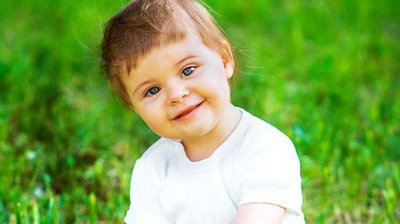
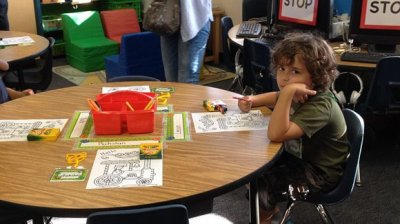
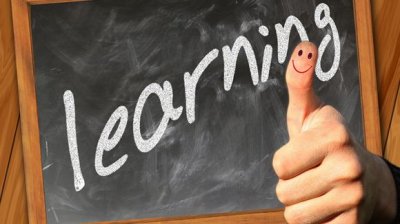
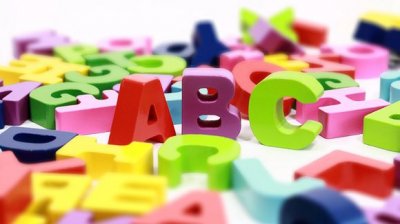
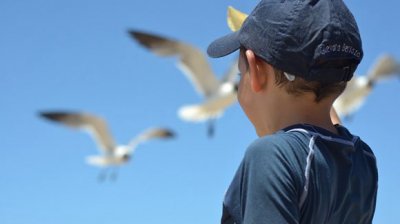 苏教五年级上册英语测
苏教五年级上册英语测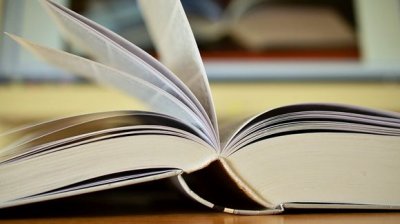 小学一年级英语阅读文
小学一年级英语阅读文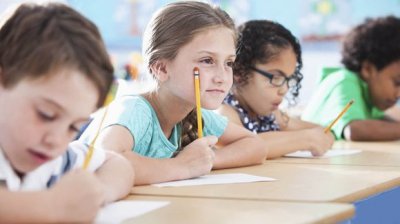 经典的英文童话故事
经典的英文童话故事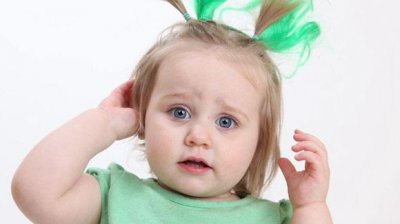 六年级上册英语复习方
六年级上册英语复习方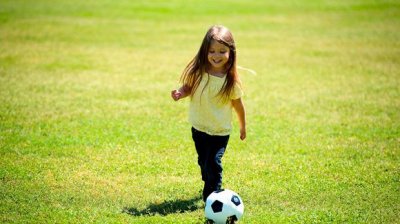 2018小学六年级英语上
2018小学六年级英语上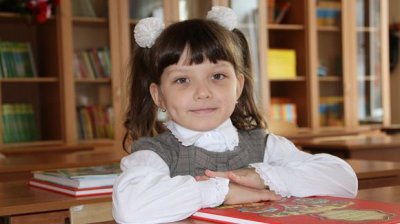 六年级上册英语苏教版
六年级上册英语苏教版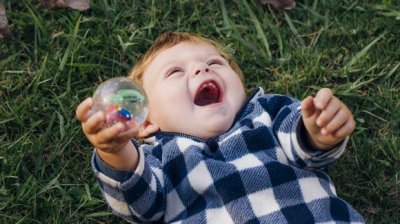 适合三年级英语诗有哪
适合三年级英语诗有哪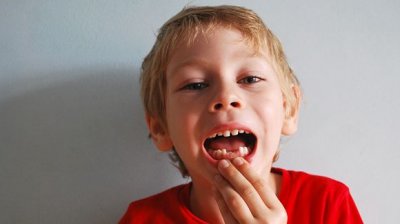 搞笑的三年级英语短笑
搞笑的三年级英语短笑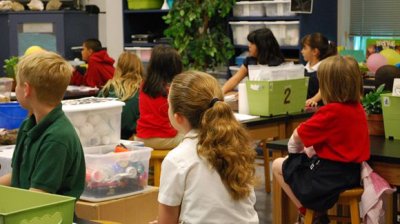 小学二年级英语字母练
小学二年级英语字母练 儿童英语歌的学习技巧
儿童英语歌的学习技巧 小学六年级英语如何复
小学六年级英语如何复 小学三年级下册英语摘
小学三年级下册英语摘 小学四年级英语练习题
小学四年级英语练习题 小学四年级英语上册期
小学四年级英语上册期 小学五年级暑假英语作
小学五年级暑假英语作 2018小学五年级英语考
2018小学五年级英语考
